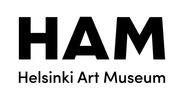Ars Fennica 2025 candidates announced
The candidates for the Ars Fennica 2025 prize are Ragna Bley from Sweden and Norway, Roland Persson from Sweden, as well as Jani Ruscica and Hanna Vihriälä from Finland. The winner of the prize will be chosen by Mami Kataoka, Director of the Mori Art Museum and the director of the National Center for Art Research (NCAR) in Japan.
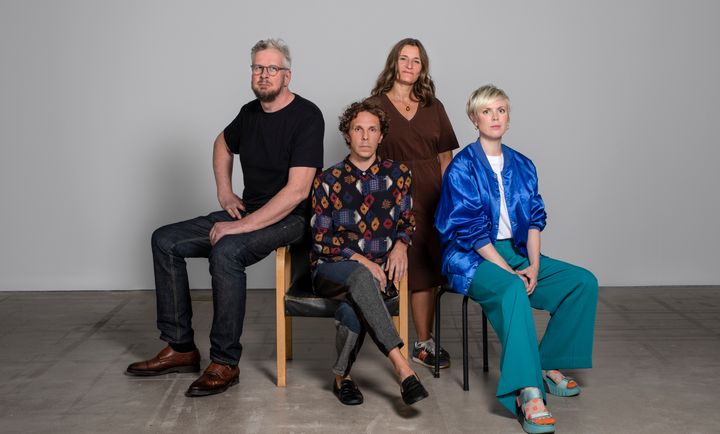
The Henna and Pertti Niemistö Art Foundation – ARS FENNICA sr was established in 1990 to promote the visual arts by opening up new channels for Finnish visual art internationally, by providing artists with inspiration in their creative work, and by encouraging interest in and respect for the visual arts among the general public.
In alternate years, the Foundation awards Finland’s most significant visual-art prize – 50,000 euros. The prize goes to an artist in recognition of individual artistic work of outstanding quality. The nominees have variously been from Finland, the Nordic countries, the Baltic States and the St Petersburg region.
The candidates for 2025 have been nominated by the award panel, which includes the chairperson, Dr. Leena Niemistö, along with members visual artist Eija-Liisa Ahtila, Dean Leevi Haapala (University of the Arts Helsinki's Academy of Fine Arts), and Museum Director Arja Miller (HAM Helsinki Art Museum).
The group exhibition showcasing the candidates' works will be on display at HAM Helsinki Art Museum from October 24, 2025, to March 15, 2026. The winner will be chosen from among the candidates by an international art expert invited by the award committee, Director of the Mori Art Museum and Director of the National Center for Art Research (NCAR) in Japan, Mami Kataoka. The winner will be announced in the spring of 2026. The public can also vote for their favorite candidate in the exhibition.
Introductions of the Candidates and the Art Expert
Ragna Bley
Ragna Bley’s large paintings are characterised by organic and fluid forms that leave room for chance and unpredictability. Her art oscillates between the representational and the enigmatic. Distinctly experimental, her work also includes sculptures and performances wherein language and text are important components. Spatiality plays an important role in experiencing Bley’s work. For instance, a series of paintings might be hung on wires, floating back-to-back across the room, creating unique conditions for viewing and experiencing.
Bley paints on the floor of her studio in Oslo, pouring and scraping paint over sail cloth and other materials to create layers of colour. She also works on PVC with thick enamel paint, which instead of absorbing into the surface, takes on a sculptural form. Bley has even sewn pockets onto canvases, filling them with organic materials such as tea leaves, dried raspberries, and turmeric. These works are then placed outdoors, which makes the motifs live based on the forces of the weather. Beyond the vivid and shifting qualities of colour, however, the works are also infused with a variety of references to science fiction, science and art history.
The starting point is often personal and emotional, a process guided by intuition and bodily experience. Through countless sketches, the artist explores forms and constellations to find ambivalent spaces or states. Her paintings give a sense of capturing the image in the slow process of its formation and evolution, like an organism of uncertain status. The organic forms can be seen as a kind of social amoeba, functioning both as a large-scale body and as small individual units, wherein Bley questions the common binary division between individual and group in contemporary society.
Ragna Bley (b. 1986, Sweden) lives in Oslo. She holds a BA in Fine Art from the Oslo Art Academy (2011) and an MA in Fine Art from the Royal College of Art, London (2015). Bley has had solo exhibitions at Malmö Konsthall, Kunstnernes Hus, OSL Contemporary, Kunsthuset Kabuso, and Downs & Ross in New York, as well as at Pilar Corrias Gallery in London. Her work is included in prestigious collections such as Henie Onstad Kunstsenter, Kistefos Museum, Nasjonalmuseet, and Astrup Fearnley Museet in Norway, as well as Moderna Museet in Stockholm, Malmö Konstmuseum, and Statens Konstråd in Sweden.
Roland Persson
Nature is depicted in Roland Persson’s painterly silicone sculptures and large-scale installations with an ambiguous tension, balancing destruction and creation. His representations of reality often blend in surreal, dreamlike elements, with plants and animals appearing distorted and mistreated by humanity. Persson has long been fascinated by the relationship between humans and nature, and by nature as a symbolic source. While his imagery often draws from a kind of scientific categorization, it is not merely a depiction of nature for its own sake. Instead, nature serves as a canvas on which to project the subconscious and emotions, a stage for metaphors. Persson’s work features objects or fragments of nature to which he has a special connection or with which he grew up. The subject can also be stories or fantasies that are loaded with something that concerns him personally.
Persson has long worked with pigmented silicone rubber casts to achieve the right organic appearance. Chance plays a crucial role in the creation of these sculptures and serves as an aesthetic expression in its own right. Persson is also known for his many public artworks in Sweden. Made from silicone or painted bronze and aluminium, the works convey playfulness, femininity, colour and conceptuality. Drawing is fundamental to Persson’s practice. He creates large-scale drawings on yellowed paper, meticulously composed with dots, depicting motifs such as cactuses, animal anatomy, or glass cabinets with skeletons inside. These drawings are a kind of complement to the sculptures, suggesting a scientific thrust or an explanation of something elusive.
Roland Persson (b. 1963) is based in Stockholm. He graduated from the Academy of Fine Arts in Umeå in 1993, and furthered his studies at the Royal Institute of Art in Stockholm. Persson’s academic background is enriched by his interest in theoretical psychoanalysis, which is evident in the subconscious and analytical aspects of his work. Persson’s art has been showcased in solo and group exhibitions across the Nordic countries and Europe, as well as in Russia and Asia. In Finland, his work has been featured in museum exhibitions at Amos Rex and the HAM Helsinki Art Museum in 2024, and he had a solo exhibition at the Kuntsi Museum of Modern Art in Vaasa in 2023.
Jani Ruscica
Jani Ruscica works across mediums of moving and printed image, sculpture and performance. Central to the artist's practice is the slippage and simultaneity of meaning animated by forms that move, stretch, shape-shift, and exceed the borders of time, space, and bodies. Working with fragmentary signs or images we think we already know, Ruscica deploys the pseudo-familiar to undermine immediate legibility in favour of precarious, improvisational processes.
Their sculptural video installations and flowing site-specific murals transform architectures, often integrating the physical context of their environments in order to unsettle any stable orientation or corporeality. As also seen in their woodcuts and reliefs, Ruscica's relational processes of figurative abstraction and collaging maintain a risky openness to interpretation, sparking visual and material conversations with viewers that can frustrate our automatic practices of de-coding. Attending to the moments when clear meaning disintegrates, Ruscica never portrays a subject but rather shows us how relationships between language, sound, form, and the body are constantly in flux--these animate, nonbinary, in-between moments point to the politics of their practice. Their work queerly refuses the trappings of singular meaning and taxonomic categorization that are used to submit particular subjects or objects to larger systems of power. Instead, Ruscica performatively activates the contradiction and opacity inherent in visual phenomena, their playful iconicity giving way to hybridity, multiplicity, and boundless movement.
Jani Ruscica (b. 1978, Finland/Italy) lives and works in Helsinki. They studied sculpture at Chelsea College of Art & Design in London (BA 2002) and media art at the Academy of Fine Arts in Helsinki (MA 2007). Ruscica has held many solo exhibitions, most recently at Kunsthalle Helsinki (2022) and 1646 Art Space in The Hague (2021). Their works have appeared in many international group exhibitions, including Kiran Nadar Museum, New Delhi (2023); 6th Dhaka Art Summit, Bangladesh (2023); HAM Helsinki Art Museum (2023); MMOMA, Moscow (2021); AGWA, Perth (2020); and the 1st Riga Biennial (2018). Ruscica has work in the collections of Centre Pompidou in Paris, the Saastamoinen Foundation, and the Museum of Contemporary Art Kiasma in Helsinki, among others. In 2018, they were awarded the William Thuring main prize.
Hanna Vihriälä
The sense of material is the driving force in the art works by sculptor Hanna Vihriälä. She uses materials otherwise rarely seen in art, such as candy, gravel, and acrylic beads, which she strings together by hand on steel wires to create large, suspended, airy works. These pieces require meticulous craftsmanship, often comprising up to 350,000 acrylic beads that form a rigorous yet vibrant surface. Her works exhibit a tension between different contrasts like durability and fragility, or hard and soft.
Inspired by everyday observations, her subjects range from weeds and smoke breaks to Mercedes cars. Despite their everyday underpinnings, Vihriälä’s works are deeply personal, yet she succeeds in making them universally relatable, conveying emotions that many can identify with, such as the death of a parent, childhood memories, or greed. An ordinary object is magnified to an enormous size, taking on dreamlike, unreal features. Vihriälä’s visual language blends elements of graphic art, painting, and sculpture. Her works also engage multiple senses, such as a piece made of 200,000 pieces of sweet-scented candy forming a giant rose, expressing themes of desire, pleasure, and temptation.
Vihriälä is known for her numerous public works in schools and hospitals across Finland. Her work is highly site-specific, with dimensions and sometimes content and materials sourced from the installation locations. Vihriälä also uses bronze, cast iron, aluminium, and brass, such as when she created animal noses in alphabetical order on a primary school wall. She often engages with local residents, encouraging them to contribute materials to her creations, such as pink toys, knitting needles, plastic screw caps, mobile phone cases, straws, and balls, building from them a huge flying, youthful heart.
Hanna Vihriälä (b. 1974 in Oulainen, lives and works in Tampere, Finland) graduated from the sculpture department of the Finnish Academy of Fine Arts in Helsinki in 2003. She also holds a degree in sculpture from the Estonian Academy of Arts. Since 1999, she has exhibited her work at the Sculptor and Forum Box galleries and Kiasma Museum of Contemporary Art in Helsinki, among others. Vihriälä has work in the collections of Föreningen Konstsamfundet – Amos Rex, Kiasma, and the Wäinö Aaltonen Museum in Finland.
Mami Kataoka
Mami Kataoka, the director of the Mori Art Museum in Tokyo, is also serving as the director of the National Center for Art Research (NCAR) in Japan since 2023. She was appointed as the director of the Mori Art Museum in 2020. Prior to that, she worked as a curator at Mori starting in 2003. Kataoka has been the Chief Curator at Tokyo Opera City Art Gallery (1997–2002).
Beyond Japan, Kataoka has held positions at the Hayward Gallery in London from 2007 to 2009 as International Curator; she has also acted as Co-Artistic Director for the 9th Gwangju Biennale (2012), Artistic Director for the 21st Biennale of Sydney (2018) and Artistic Director for the Aichi Triennale 2022. Kataoka served as a Board Member (2014–2022) and the President (2020–2022) of CIMAM (International Committee for Museums and Collections of Modern Art).
At Mori Art Museum, Kataoka has curated a number of mid-career survey shows of Asian artist including Tsuyoshi Ozawa (2004), Ai Weiwei (2009), Lee Bul (2012), Makoto Aida (2012), Lee Mingwei (2014) , NS Harsha (2017) and Chiharu Shiota (2019) while co-curated regional shows including SUNSHOWER : Contemporary Art from Southeast Asia 1980s to Now (2017) and Roppongi Crossing: Contemporary Japanese Art in 2004 and 2013.
Kataoka frequently writes, lectures, and juries on contemporary art from Japan, Asia and beyond.
Ars Fennica 2025
October 24, 2025 – March 15, 2026
HAM Helsinki Art Museum
Contact Information
Henna and Pertti Niemistö Visual Arts Foundation ARS FENNICA sr:
Executive Director Camilla Granbacka, camilla.granbacka@arsfennica.fi, +358 44 308 7931
HAM Communications:
Maarit Kivistö, maarit.kivisto@hamhelsinki.fi, +358 40 485 5687
Keywords
Images
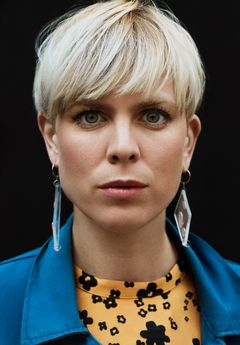
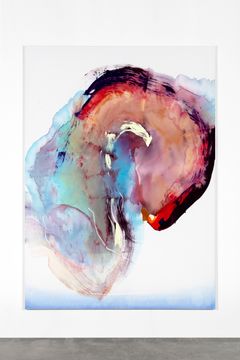
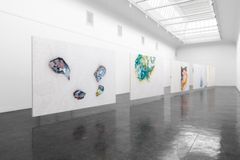
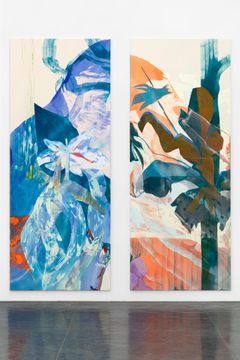
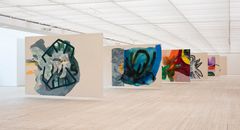
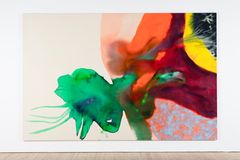
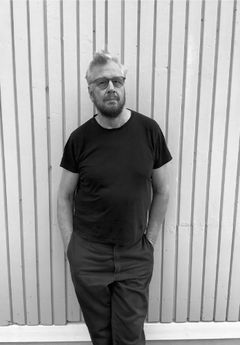
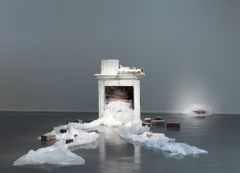
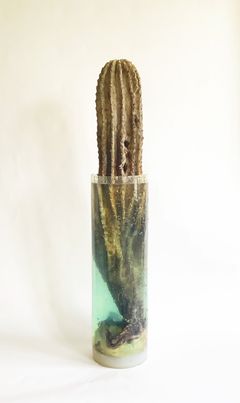
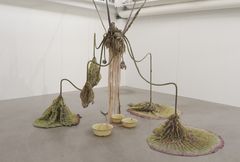
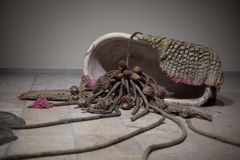
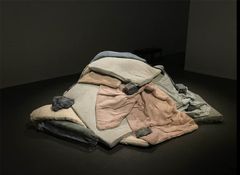
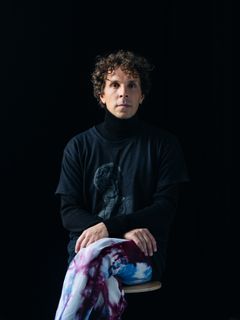
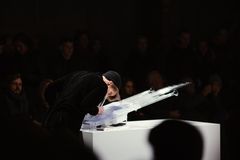
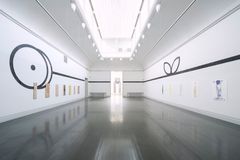
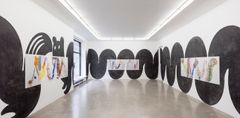
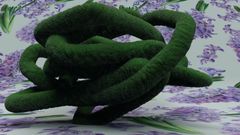
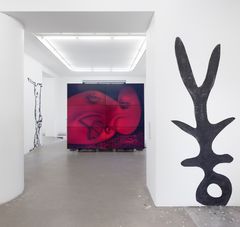
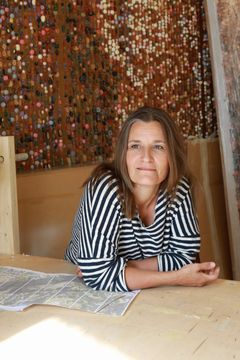
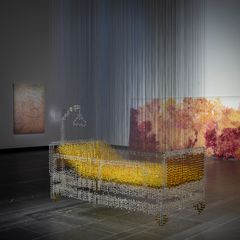
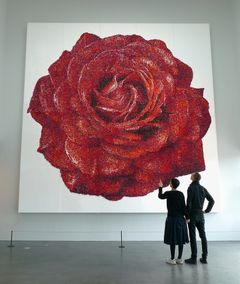
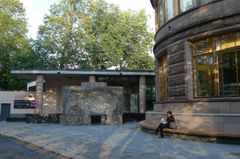
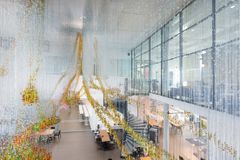
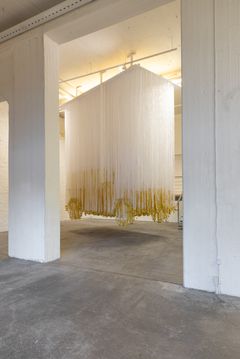


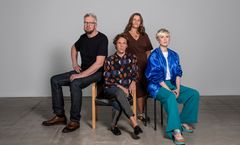
Links
Alternative languages
Subscribe to releases from HAM Helsingin taidemuseo
Subscribe to all the latest releases from HAM Helsingin taidemuseo by registering your e-mail address below. You can unsubscribe at any time.
Latest releases from HAM Helsingin taidemuseo
Nya konstverk färdigställda i Helsingforsskolor – Love Helsinki tillbaka på Banan16.12.2025 10:00:00 EET | Pressmeddelande
Två nya procentkonstverk kuraterade av HAM Helsingfors konstmuseum har färdigställts för skolbyggnader i Helsingfors. Anu Tuominens konsthelhet skapad av återvunnet material livar upp Kottby finska grundskola, och Jussi Valtakaris och Antti Ylönens ”Det var en gång...”, som leder in i sagornas värld, tar konsten till daghemmet Aurinkokallio i Gamlas. Jämte de verk som skolorna har fått, har även Janne Siltanens Love Helsinki återbördats till Banan.
Uusia taideteoksia valmistui helsinkiläisiin oppilaitoksiin – Love Helsinki palasi Baanalle16.12.2025 10:00:00 EET | Tiedote
Kaksi uutta HAM Helsingin taidemuseon kuratoimaa prosenttitaideteosta on valmistunut helsinkiläisiin oppilaitoksiin. Anu Tuomisen kierrätysmateriaaleista rakentuva teoskokonaisuus ilahduttaa Käpylän peruskoulussa, ja Jussi Valtakarin ja Antti Ylösen satumaailmaan johdattava Olipa kerran… tuo taidetta Kannelmäen Aurinkokallion päiväkotiin. Oppilaitoksiin sijoittuvien teosten ohella myös Janne Siltasen uudistunut Love Helsinki on tehnyt paluun Baanalle.
New art for educational institutions in Helsinki – Love Helsinki returns to Baana16.12.2025 10:00:00 EET | Press release
Curated by HAM Helsinki Art Museum under the Percent for Art Principle, two new artworks have been installed in Helsinki’s educational institutions. A series of artworks created by Anu Tuominen from recycled materials delights pupils, staff and visitors at Käpylä Comprehensive School, while ‘Once upon a time...’ by Jussi Valtakari and Antti Ylönen brings art to Daycare Aurinkokallio in Kannelmäki, transporting viewers to a world of fairytales. In addition to the works for educational institutions, Janne Siltanen’s renewed Love Helsinki has returned to Baana.
Marguerite Humeau utforskar existensens grundläggande frågor i sin utställning på HAM20.11.2025 12:30:00 EET | Pressmeddelande
Den franska konstnären Marguerite Humeau förvandlar den ena av HAM:s stora, välvda salar till en helt ny form. Humeau är en stigande stjärna på den internationella konstscenen och det här är första gången hennes konst visas i Finland. Utställningen Facklor är öppen från den 21 november 2025 till den 15 mars 2026.
Marguerite Humeau tutkii olemassaolon perimmäisiä kysymyksiä HAMissa20.11.2025 12:30:00 EET | Tiedote
Ranskalainen Marguerite Humeau muuntaa toisen HAMin suurista kaarihalleista ennennäkemättömään muotoon. Kyseessä on kovassa kansainvälisessä nosteessa olevan ranskalaisen taiteilijan ensiesiintyminen Suomessa. Soihdut-näyttely on avoinna 21.11.2025–15.3.2026.
In our pressroom you can read all our latest releases, find our press contacts, images, documents and other relevant information about us.
Visit our pressroom
